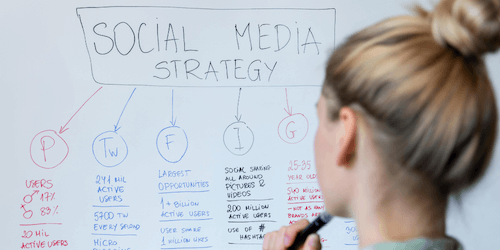
5 Ways to Connect With Your Nonprofit’s Supporters
Your nonprofit’s teams devote their time to connecting with potential supporters because most people support causes and organizations that they have a personal connection to. This doesn’t just apply to board members and corporate sponsors. Every stakeholder should feel supported and valued by your nonprofit, whether they’re major donors or just gave last Giving Tuesday.
That being said, you have many factors to account for when planning your stakeholder outreach. For example, your volunteers likely have different interests than your capital campaign donors. A generalized appeal for support is less effective than a customized one, so employing several outreach methods tailored to your audience will yield better results.
In this guide, we’ll review several important stakeholder groups your nonprofit should target and steward and then explore additional ways to connect with them.
1. Leverage outreach software
Before you plan your outreach activities, ensure that you’re prepared with the right tools. In particular, having the right nonprofit software is a necessary part of the relationship-building process. You can automate and streamline most (if not all) of your nonprofit’s operations with software. So, no matter your chosen strategies, there’s a software solution that can help you better connect with your supporters. Consider the following areas of nonprofit software solutions:
- Donor management
- Online content management
- Fundraising management
- Event planning
- Marketing and communications management
- Advocacy campaign management
With software solutions, you can minimize error and target your outreach to ensure that each supporter receives relevant communications.
2. Plan engaging events
No matter what group you’re trying to reach, a surefire way to get their attention is by inviting them to events. Whether you choose to host a fundraising event, volunteer enrichment seminar, or meet-and-greet with beneficiaries, be sure to:
- Assess your past events to gauge their effectiveness.
- Reuse popular and successful events.
- Plan your event schedule at the beginning of the year.
- Create a marketing/outreach plan in advance.
- Make unique branding for each event.
- Follow up personally and thank your attendees.
- Consider making your event hybrid or fully virtual.
As well as engaging your supporters and spreading the word about your cause, events are useful for you to learn more about your supporters. Ensure you strategically and personally communicate with your stakeholders to find out their interests and motivations for supporting you. This is valuable information to use when pitching gifts or volunteer opportunities.
3. Ask donors for feedback
The best way to know what your donors are thinking is to ask them directly. Use online surveys to get feedback on your latest initiatives. For instance, you can ask your event attendees about their overall satisfaction with the event and if they would participate again in the future. You can also send out feedback surveys throughout the year to understand how you’re doing regarding:
- The quality and frequency of your outreach activities.
- The progress you have made in achieving your purpose.
- The ability to deliver value to stakeholders.
Once you’ve gathered your supporters’ responses, work with your team to determine which changes to implement going forward. Ensure you acknowledge your supporters and communicate that you have their best interests in mind.
4. Use multiple communication streams
Since your supporters likely have different communication preferences, use several methods to keep in touch with them. Consider the following communication methods:
- Email: Email marketing is an effective way to get information to your supporters quickly and cheaply. Send out regular newsletters so stakeholders can stay updated on what your organization’s doing.
- Direct mail: While direct mail can be more expensive than email, receiving a handwritten note adds a personal touch to your communications.
- Social media: Use social media to post brief updates about your programs or events. Post pictures of your attendees and encourage them to share them with their own networks. Don’t forget to use the comments and direct messages to communicate as well.
- Virtual drop-ins: Providing a space for your supporters to ask questions or just catch up with your staff can help them feel prioritized and heard. Schedule a drop-in town hall-style meeting once a month so your supporters can call in and get up to speed. The most convenient and cost-effective format to host this meeting is via a video conferencing platform, so ensure you send out the meeting link through email.
In addition to using several outreach methods, your nonprofit should customize its messaging according to the preferences and engagement history of each supporter. For example, you would send different messages to lapsing monthly donors than you would send to first-time donors to a giving day campaign. Segmenting your communication by your recipients’ relationship to your nonprofit ensures they receive the most relevant information and appeals.
5. Show your appreciation
You can’t achieve your goals without your supporters, and for that, they deserve your utmost gratitude. Show them that you value their support by starting appreciation initiatives. You might thank your supporters by:
- Hosting an appreciation dinner.
- Creating a permanent donor wall in your office or on your website.
- Make a video or blog post highlighting influential donors or volunteers.
- Awarding them gifts, such as your nonprofit’s branded merchandise.
- Arranging meet-and-greets with beneficiaries who can thank them directly.
These ideas go beyond the automated post-donation thank-you email that your supporters expect after giving or volunteering. Remember to consistently think of new ways to express your gratitude so they continue supporting your organization. The more personal your messaging tactics are, the better! And don't forget about the role your nonprofit's board can play in donor recognition, particularly for major donors. Because they are high-profile members of your organization, they can have a powerful role in donor retention and stewardship.
Wrapping up
Whether they’re donating money, time, or resources, connecting individually with as many of your supporters as possible is the first step to building long-term relationships. So, keep donors on your radar during your fundraisers, monitor their engagement habits over time, and adjust your relationship-building approach accordingly.
You May Also Like
These Related Stories

How to create a nonprofit social media plan that sticks
.png)
Nonprofit advertising in tough times: Advocating for impact
